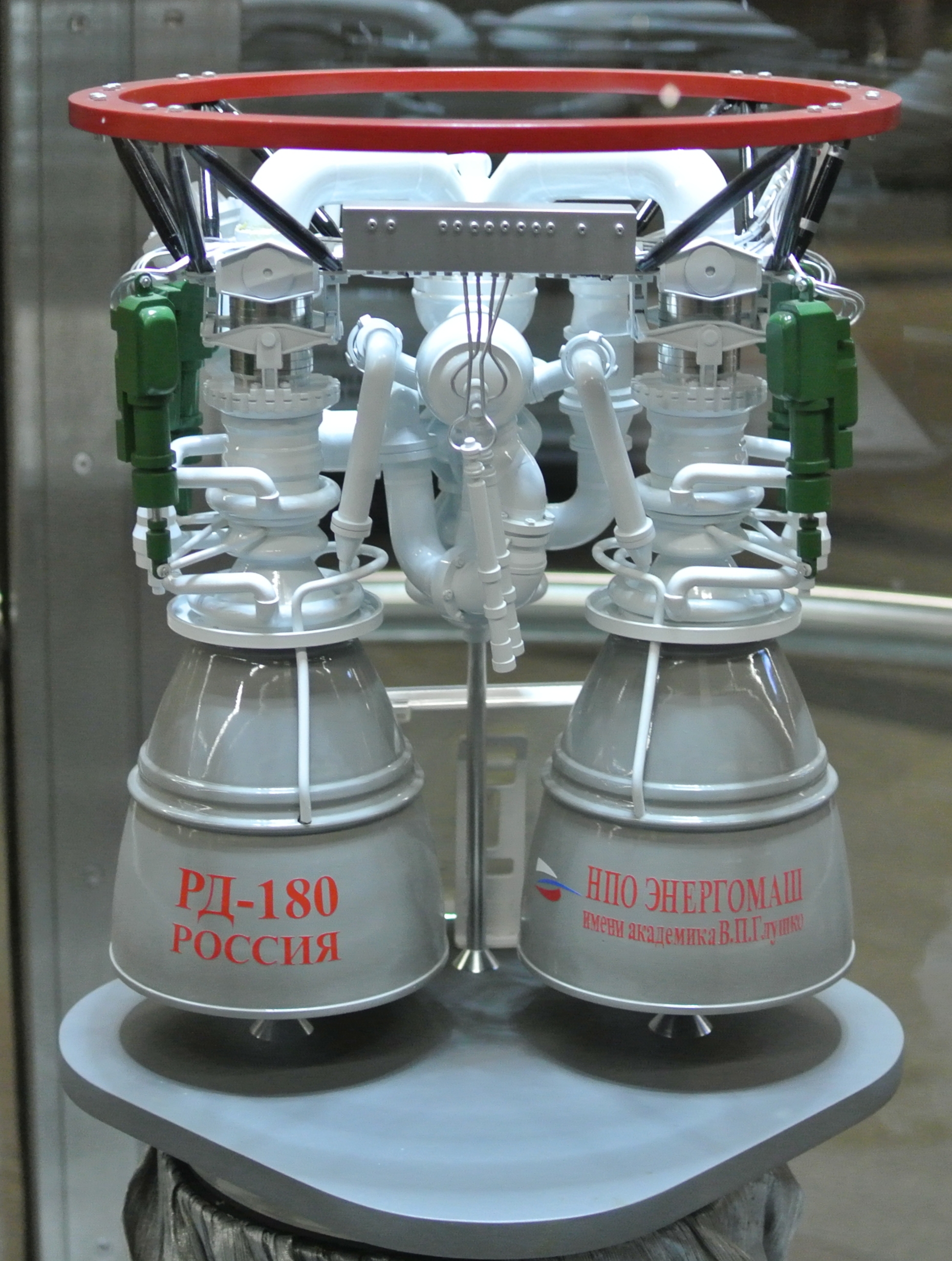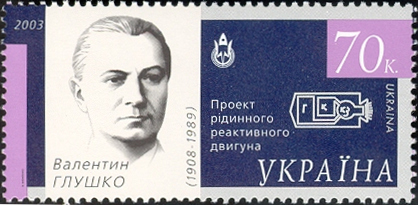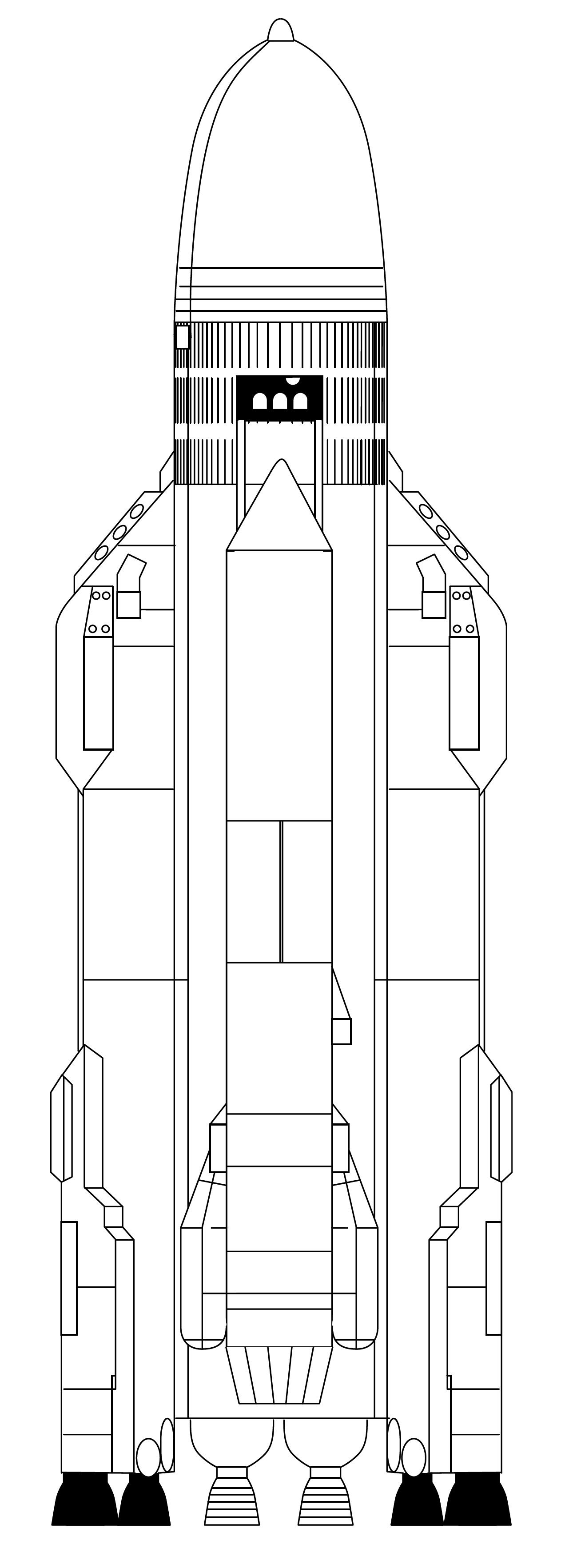|
NPO Energomash
NPO Energomash “V. P. Glushko” is a major Russian rocket engine manufacturer. The company primarily develops and produces liquid propellant rocket engines. Energomash originates from the Soviet design bureau OKB-456, which was founded in 1946. NPO Energomash acquired its current name on May 15, 1991, in honor of its former chief designer Valentin Glushko. Energomash is noted for its long history of large scale LOX/Kerosene engine development. Notable examples are the RD-107/ RD-108 engines used on the R-7, Molniya and Soyuz rocket families, and the RD-170, RD-171 and RD-180 engines used on the Energia, Zenit and Atlas V launch vehicles. , the company remained largely owned by the federal government of Russia, but RSC Energia owned approximately 14% of the total shares. , NPO Energomash employed approximately 5500 workers at its headquarters in Khimki, Moscow and its satellite facilities in Samara, Perm, and St. Petersburg. On 4 August 2016, the company announced ... [...More Info...] [...Related Items...] OR: [Wikipedia] [Google] [Baidu] |
RD-180
The RD-180 ( rus, РД-180, Ракетный Двигатель-180, Raketnyy Dvigatel-180) is a rocket engine designed and built in Russia. It features a dual combustion chamber, dual-nozzle design and is fueled by a RP-1/LOX mixture. The RD-180 is derived from the RD-170/RD-171 line of rocket engines, which were used in the Soviet Energia launch vehicle and are still in use in the Ukrainian Zenit launch vehicles. RD-180 engines are also used for the first stage of the American Atlas V launch vehicle, which is being phased out due to the national security implications of being reliant on foreign parts which became of concern after the Russian invasion of Crimea. , Russian supplies and maintenance have been discontinued as the result of trade sanctions caused by the 2022 Russian invasion of Ukraine. History The roots of the RD-180 rocket engine extend back into the Soviet Energia launch vehicle project. The RD-170, a four-chamber engine, was developed for use on the strap-o ... [...More Info...] [...Related Items...] OR: [Wikipedia] [Google] [Baidu] |
Aerospace Industry
Aerospace is a term used to collectively refer to the atmosphere and outer space. Aerospace activity is very diverse, with a multitude of commercial, industrial and military applications. Aerospace engineering consists of aeronautics and astronautics. Aerospace organizations research, design, manufacture, operate, or maintain both aircraft and spacecraft. The beginning of space and the ending of the air is considered as 100 km (62 mi) above the ground according to the physical explanation that the air pressure is too low for a lifting body to generate meaningful lift force without exceeding orbital velocity. Overview In most industrial countries, the aerospace industry is a cooperation of the public and private sectors. For example, several states have a civilian space program funded by the government, such as National Aeronautics and Space Administration in the United States, European Space Agency in Europe, the Canadian Space Agency in Canada, Indian Space R ... [...More Info...] [...Related Items...] OR: [Wikipedia] [Google] [Baidu] |
RD-108
The RD-107 and its sibling, the RD-108, are a type of rocket engine initially used to launch R-7 Semyorka missiles. RD-107 engines were later used on space launch vehicles based on the R-7. , very similar RD-107A and RD-108A engines are used to launch the Soyuz-2.1a, and Soyuz-2.1b, which are in active service. Design The RD-107 was designed under the direction of Valentin Glushko at the Experimental Design Bureau (OKB-456) between 1954 and 1957. It uses liquid oxygen and kerosene as propellants operating in a gas generator cycle. As was typical by all the descendants of the V-2 rocket technology, the turbine is driven by steam generated by catalytic decomposition of H₂O₂. The steam generator uses solid ''F-30-P-G'' catalyst. These are based on a variable sized pellet covered in an aqueous solution of potassium permanganate and sodium. Each engine uses four fixed main combustion chambers. The RD-107 has an additional two vernier combustion chambers that can thrust vecto ... [...More Info...] [...Related Items...] OR: [Wikipedia] [Google] [Baidu] |
Valentin Petrovich Glushko
Valentin Petrovich Glushko (russian: Валенти́н Петро́вич Глушко́; uk, Валентин Петрович Глушко, Valentyn Petrovych Hlushko; born 2 September 1908 – 10 January 1989) was a Soviet engineer and the main designer of rocket engines in the Soviet space program during the heights of the Space Race between United States and the Soviet Union. Biography At the age of fourteen he became interested in aeronautics after reading novels by Jules Verne. He is known to have written a letter to Konstantin Tsiolkovsky in 1923. He studied at an Odessa trade school, where he learned to be a sheet metal worker. After graduation he apprenticed at a hydraulics fitting plant. He was first trained as a fitter, then moved to lathe operator. During his time in Odessa, Glushko performed experiments with explosives. These were recovered from unexploded artillery shells that had been left behind by the White Guards during their retreat. From 1924 to 1925 he ... [...More Info...] [...Related Items...] OR: [Wikipedia] [Google] [Baidu] |
Perm, Russia
Perm (russian: Пермь, p=pʲermʲ), previously known as Yagoshikha (Ягошиха) (1723–1781), and Molotov (Молотов) (1940–1957), is the largest city and the administrative centre of Perm Krai, Russia. The city is located on the banks of the Kama River, near the Ural Mountains, covering an area of , with a population of over one million residents. Perm is the List of cities and towns in Russia by population, fifteenth-largest city in Russia, and the fifth-largest city in the Volga Federal District. In 1723, a copper-smelting works was founded at the village of ''Yagoshikha''. In 1781 the settlement of Yagoshikha became the town of ''Perm''. Perm's position on the navigable Kama River, leading to the Volga, and on the Siberian Route across the Ural Mountains, helped it become an important trade and manufacturing centre. It also lay along the Trans-Siberian Railway. Perm grew considerably as industrialization proceeded in the Urals during the Soviet period, and i ... [...More Info...] [...Related Items...] OR: [Wikipedia] [Google] [Baidu] |
Samara, Russia
Samara ( rus, Сама́ра, p=sɐˈmarə), known from 1935 to 1991 as Kuybyshev (; ), is the largest city and administrative centre of Samara Oblast. The city is located at the confluence of the Volga and the Samara rivers, with a population of over 1.14 million residents, up to 1.22 million residents in the urban agglomeration, not including Novokuybyshevsk, which is not conurbated. The city covers an area of , and is the eighth-largest city in Russia and tenth agglomeration, the third-most populous city on the Volga, as well as the Volga Federal District. Formerly a closed city, Samara is now a large and important social, political, economic, industrial, and cultural centre in Russia and hosted the European Union—Russia Summit in May 2007. It has a continental climate characterised by hot summers and cold winters. The life of Samara's citizens has always been intrinsically linked to the Volga River, which has not only served as the main commercial thoroughfare of Russia th ... [...More Info...] [...Related Items...] OR: [Wikipedia] [Google] [Baidu] |
RSC Energia
PAO S. P. Korolev Rocket and Space Corporation Energia (russian: Ракетно-космическая корпорация «Энергия» им. С. П. Королёва, Raketno-kosmicheskaya korporatsiya "Energiya" im. S. P. Korolyova), also known as RSC Energia (, RKK "Energiya"), is a Russian manufacturer of spacecraft and space station components. The company is the prime developer and contractor of the Russian crewed spaceflight program; it also owns a majority of Sea Launch. Its name is derived from Sergei Korolev, the first chief of its design bureau, and the Russian word for energy. Overview Energia is the largest company of the Russian space industry and one of its key players. It is responsible for all operations involving human spaceflight and is the lead developer of the Soyuz and Progress spacecraft, and the lead developer of the Russian end of the International Space Station (ISS). In the mid-2000s, the company employed 22,000–30,000 people. The ente ... [...More Info...] [...Related Items...] OR: [Wikipedia] [Google] [Baidu] |
Government Of Russia
The Government of Russia exercises executive power in the Russian Federation. The members of the government are the prime minister, the deputy prime ministers, and the federal ministers. It has its legal basis in the Constitution of the Russian Federation and the federal constitutional law "On the Government of the Russian Federation". The Apparatus of the Government of Russia is a governmental body which administrates the activities of the government. According to the 1991 amendment to the 1978 constitution, the President of Russia was the head of the executive branch and headed the Council of Ministers of Russia. According to the current 1993 constitution, the president is not a part of the government of Russia, which exercises executive power. However, the president appoints the prime minister. History The large body was preceded by Government of the Soviet Union. Since the Russian Federation emerged from 1991 to 1992, the government's structure has undergone several m ... [...More Info...] [...Related Items...] OR: [Wikipedia] [Google] [Baidu] |
Atlas V
Atlas V is an expendable launch system and the fifth major version in the Atlas (rocket family), Atlas launch vehicle family. It was originally designed by Lockheed Martin, now being operated by United Launch Alliance (ULA), a joint venture between Lockheed Martin and Boeing. Atlas V is also a major NASA launch vehicle. It is America's longest-serving active rocket. In August 2021, ULA announced that Atlas V would be retired, and all 29 remaining launches had been sold. , 19 launches remain. Each Atlas V launch vehicle consists of two main stages. The first stage (rocketry), first stage is powered by a Russian RD-180 engine manufactured by NPO Energomash, Energomash and burning kerosene and liquid oxygen. The Centaur (rocket stage), Centaur upper stage is powered by one or two American RL10 engine(s) manufactured by Aerojet Rocketdyne and burns liquid hydrogen and liquid oxygen. The Star 48 upper stage was used on the ''New Horizons'' mission as a third stage. strap-on booster, ... [...More Info...] [...Related Items...] OR: [Wikipedia] [Google] [Baidu] |
Zenit (rocket)
Zenit ( uk, Зеніт, russian: Зени́т; meaning ''Zenith'') is a family of space launch vehicles designed by the Yuzhnoye Design Bureau in Dnipro, Ukraine, which was then part of the Soviet Union. Zenit was originally built in the 1980s for two purposes: as a liquid rocket booster for the Energia rocket and, equipped with a second stage, as a stand-alone middle-weight launcher with a payload greater than the 7 tonnes of the Soyuz but smaller than the 20 tonnes payload of the Proton. The last rocket family developed in the USSR, the Zenit was intended as an eventual replacement for the dated Soyuz and Proton families, and it would employ propellants which were safer and less toxic than the Proton's nitrogen tetroxide/UDMH mix. Zenit was planned to take over crewed spaceship launches from Soyuz, but these plans were abandoned after the dissolution of the Soviet Union in 1991. Zenit-3SL was launched by the Sea Launch consortium's floating launch platform in the Pacific Oc ... [...More Info...] [...Related Items...] OR: [Wikipedia] [Google] [Baidu] |
Energia (rocket)
Energia (russian: Энергия, Energiya, Energy; GRAU 11K25) was a 1980s super-heavy lift launch vehicle. It was designed by NPO Energia of the Soviet Union as part of the Buran programme, Buran program for a variety of payloads including the Buran (spacecraft), Buran spacecraft. Control system main developer enterprise was the Khartron NPO "Electropribor". The Energia used four strap-on boosters each powered by a four-chamber RD-170 engine burning kerosene/Liquid oxygen, LOX, and a central core stage with four single-chamber RD-0120 (11D122) engines fueled by liquid hydrogen/LOX. The launch vehicle had two functionally different operational variants: Energia-Polyus, the initial test configuration, in which the Polyus (spacecraft), Polyus system was used as a final stage intended to put the payload into orbit, and Energia-Buran, in which the Buran programme, ''Buran'' orbiter was the payload and the source of the orbit insertion impulse. The launch vehicle had the capacity to ... [...More Info...] [...Related Items...] OR: [Wikipedia] [Google] [Baidu] |
RD-171
The RD-170 ( rus, РД-170, Ракетный Двигатель-170, Raketnyy Dvigatel-170) is the world's most powerful and heaviest liquid-fuel rocket engine. It was designed and produced in the Soviet Union by NPO Energomash for use with the Energia launch vehicle. The engine burns kerosene fuel and LOX oxidizer in four combustion chambers, all supplied by one single-shaft, single-turbine turbopump rated at in a staged combustion cycle. Shared turbopump Several Soviet and Russian rocket engines use the approach of clustering small combustion chambers around a single turbine and pump. During the early 1950s, many Soviet engine designers, including Valentin P. Glushko, faced problems of combustion instability while designing bigger thrust chambers. At that time, they solved the problem by using a cluster of smaller thrust chambers. Variants RD-170 The RD-170 engine featured four combustion chambers and was developed for use on the Energia launch vehicle – both the en ... [...More Info...] [...Related Items...] OR: [Wikipedia] [Google] [Baidu] |








